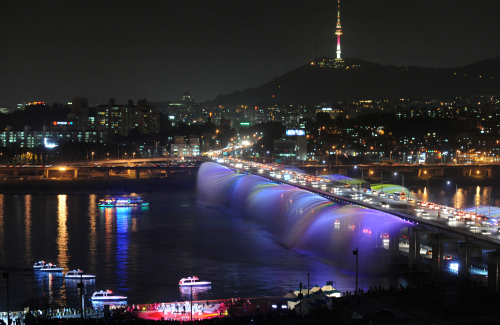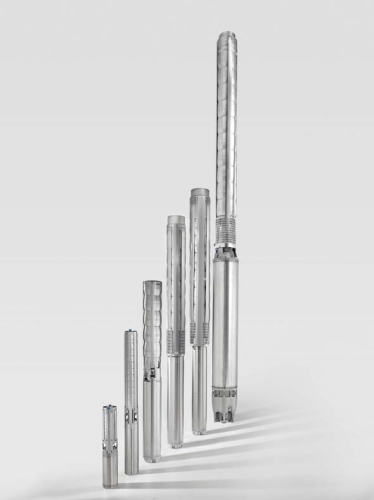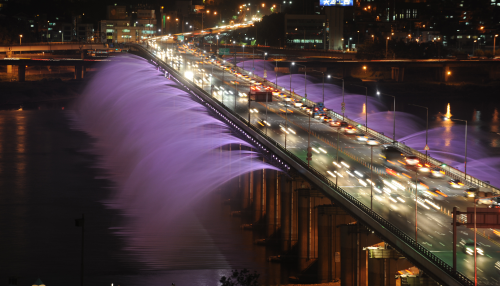


Seoul, dynamic capital of South Korea, is the seventh largest city in the world with more than 11 million inhabitants. Founded 600 years ago the city is an eclectic mix of the ancient and modern, with towering glass and steel skyscrapers looming above traditional wooden houses and narrow cobbled alleyways.
The city is bisected by the Han River whose 27 bridges link the north and south of the city. Recently the riverside area has been the focus of a major government renaissance project designed to create a range of new facilities, including cafes, viewing decks and river cruises as well as creating more access to the riverbank with improved open areas and better pedestrian access.
Until recently there was nothing particularly remarkable about any of the bridges linking one side of the Han River to the other, but a suggestion from a Seoul city hall employee and external partners, including Grundfos Pumps, changed all that. The Banpo girder bridge, originally completed in 1982, has now been completely and spectacularly transformed.
Already, the Banpo bridge has become a landmark and major tourist attraction. The remodelling includes a water feature delivering 190 tonnes of water every minute from a total of 380 nozzles, fed by 38 Grundfos SP pumps. The pumps, delivering a flow of 420 m3/h each, create a waterfall fountain that arcs spectacularly into the river 20 m below.
Lit by a range of illuminations, the new ‘rainbow fountain’ as it has become known has now entered the Guinness Book of Records as the longest waterfall of its type and has been named as one of the worlds’ top ten breathtaking bridges. Not only is the bridge visually stunning, it is also a delight to the ear. The jets of water create waves which ‘dance’ to music in 100 different choreographed movements and at night, the 600 colour changing illuminations create a breathtaking backdrop.
With such a high profile and visible scheme, reliability was the top priority for the Banpo bridge development. The decision to choose submersible pumps from the Grundfos SP range was taken on the basis that Grundfos are renowned for their efficient operation and longevity. With a range offering 4, 6, 8, 10 and 12” diameters, flow rates up to 475 m3/h and heads up to 670 m, there is an option for virtually every specified duty point to be fulfilled.
All Grundfos SP models are made entirely of stainless steel, which is particularly important in applications such as this, where the groundwater being pumped will contain abrasives that can quickly wear out the pump and motor. To minimise this wear and tear, the SP range is designed to let the suspended particles be flushed out of the pump along with the pumped liquid.
The solution from Grundfos has already proved its durability and all parties continue to be delighted with the outcome, including Seoul Mayor Oh Se-Hoon, for the worldwide positive reaction the project has received.






